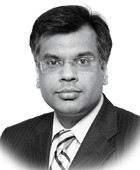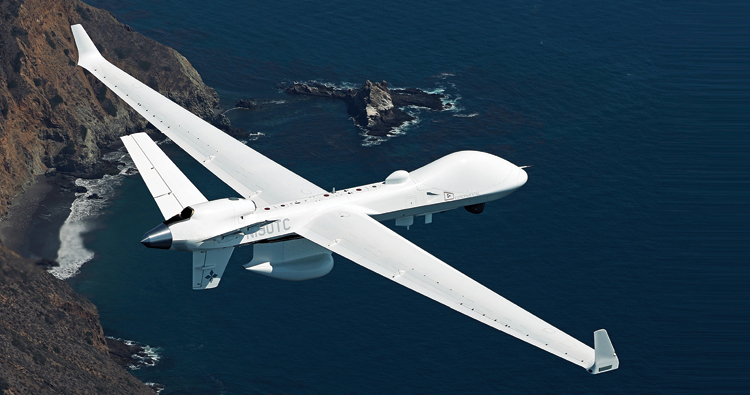INDIAN ARMED FORCES CHIEFS ON OUR RELENTLESS AND FOCUSED PUBLISHING EFFORTS

The insightful articles, inspiring narrations and analytical perspectives presented by the Editorial Team, establish an alluring connect with the reader. My compliments and best wishes to SP Guide Publications.

"Over the past 60 years, the growth of SP Guide Publications has mirrored the rising stature of Indian Navy. Its well-researched and informative magazines on Defence and Aerospace sector have served to shape an educated opinion of our military personnel, policy makers and the public alike. I wish SP's Publication team continued success, fair winds and following seas in all future endeavour!"

Since, its inception in 1964, SP Guide Publications has consistently demonstrated commitment to high-quality journalism in the aerospace and defence sectors, earning a well-deserved reputation as Asia's largest media house in this domain. I wish SP Guide Publications continued success in its pursuit of excellence.
- The layered Air Defence systems that worked superbly, the key element of Operation Sindoor
- Operation Sindoor | Day 2 DGMOs Briefing
- Operation Sindoor: Resolute yet Restrained
- India's Operation Sindoor Sends a Clear Message to Terror and the World – ‘ZERO TOLERANCE’
- Japan and India set forth a defence cooperation consultancy framework, talks on tank and jet engines
MQ-9B: The Future of Multi-Force, Multi-Domain UAS
Today’s commanders can work in a unified operations centre that ties together streams of information from space, air, land, ocean surface, undersea and more. Multi-domain operations via Remotely Piloted Aircraft (RPA) mean the organisations, doctrines and insights are seamless
 | Dr Vivek Lall, Chief Executive, General Atomics Global Corporation |

New challenges compel advanced militaries to adopt new tools and weapons–along with new ways of wielding them.
In the past, military operations took place within the context of single service branches: a navy admiral might control ships at sea off a coast where army units were commanded by a separate army general in a different uniform with a different staff and a different perspective.
No more–the complex threats of the 21st century have prompted service leaders all over the globe to break through those old stovepipes and align their forces across multiple domains, with the expectation that they’ll be better informed and more effective together than they were apart.
New structures, however, are necessary but not sufficient in order to truly realise breakthroughs in interoperability and multi-domain operations. Commanders and their forces also need the best common insights and awareness–the kind that only come from sharp-eyed, long-persisting surveillance aircraft.
The MQ-9 Reaper, for example, and newer models such as the MQ-9B SkyGuardian, have provided the revolutionary technological catalyst that makes possible so much about integrated theater multi-domain operations. The aircrafts’ builder, US-based General Atomics Aeronautical Systems, Inc., continues to pioneer new technologies and new concepts of operation to further integrate tomorrow’s forces.
If the reasons for the old approach were partly practical – it was difficult, for example, for the general to talk to the admiral – all that’s gone now. Today’s commanders can work in a unified operations centre that ties together streams of information from space, air, land, ocean surface, undersea and more.
Remotely Piloted Aircraft don’t only yield intelligence, surveillance and reconnaissance that can go directly to the commanders and forces, they also greatly compress the time needed to go from collection to decision to action
Some of the old restrictions do still apply: it remains difficult for a naval warship to climb a mountain. In many cases, though, new doctrines and new equipment mean the same maritime component commander who owns that warship also has the organic ability to see what’s taking place atop that mountain. Remotely piloted aircraft make that possible – as well as other functions such as relaying communications or creating the option to deliver effects quickly.
In other words, remotely piloted aircraft don’t only yield intelligence, surveillance and reconnaissance that can go directly to the commanders and forces that need it most – as well as anyone else, from government officials at home to allied partners. They also greatly compress the time needed to go from collection to decision to action. So the commander in the blue uniform, who can see what’s happening atop a mountain off the coast, then can do something in response almost instantly.
New capabilities mean the menu of options is broad and growing all the time.
Maybe the right answer is for a remotely piloted aircraft to energise its systems and initiate an electronic attack on the hostile forces, in anticipation of the arrival of other units. Maybe it could release a smaller remotely piloted aircraft, like GA-ASI’s SparrowHawk, which could approach closely to jam or take other actions. Maybe the SkyGuardian in this example might release ordnance directly against the opposing units.
Or maybe the right answer, even in multi-domain operations, is to do nothing.
The MQ-9B can continue to orbit the mountaintop or any other point of interest for many hours. With other aircraft poised to take its place, commanders can continue to preserve high-quality situational awareness for as long as they wish. The ability to integrate multiple aircraft operating together enables surveillance over huge sections of territory of interest.
And if the focus of action changes, the aircraft can press on too.
Consider the SkyGuardian’s sibling, the MQ-9B SeaGuardian. It’s equipped with the ability to deploy and monitor sonobuoys, which means it can help search for submerged submarines. And it also has a maritime search radar, with overland capabilities including ground moving target indication; strip and spot synthetic aperture radar and more. So the SeaGuardian ranges easily from overland, to a coastal, littoral or open-ocean patrol as needed.
In the old era, ground, air or naval component commanders might each have expected to field their own patrol aircraft or other assets in order to accumulate their own surveillance and sensing across those areas. Multi-domain operations via remotely piloted aircraft mean the organisations, doctrines and insights are seamless.
This approach and these practices require an adjustment by the commanders and military organisations involved. There are also technical complexities associated with expanding the envelopes of geographic space, operational scale and other qualities needed to exploit what’s possible.
The good news is that advancing technology at every level simplifies this complexity. The MQ-9B, for example, has a larger wingspan providing more lift than earlier models, meaning it can operate from more different, shorter airfields. That means it can hopscotch around big swathes of an area of interest, giving commanders more flexibility and creating more uncertainty for opponents about where the aircraft might go next.
Automated take-off and landing means fewer personnel than before are needed to support these aircraft, and no big equipment footprint at the bases that might recover them. Extreme reliability and simple maintenance requirements mean that an aircraft could land, refuel, be resupplied or rearmed, and then take off again after only a short time, with no permanent crew presence and no need to return again to the same field.
Multi-domain operations mean all this could take place on an island in the ocean involving an aircraft that belonged to a ground component commander. The surveillance aircraft could preserve situational awareness about activity taking place over an international boundary, deterring an enemy from assembling there or acting – or, in a conflict, help designate maritime targets for new shore-based weapons or spot the fall of shot of long-range artillery.
The human pilots operating these aircraft, thanks to seamless satellite command-control and data transfer, meanwhile, might be on the other side of the world.
Enhancements in automation, driven by GA-ASI, also mean fewer of them are needed than in earlier eras. A single crew member might supervise a flight of remotely piloted aircraft doing routine patrols, then pass control over one or more aircraft to a dedicated team who needed it for a specialised mission. In some cases a joint terminal attack controller on the ground in the area of operation might take control from her tablet computer. Once her ordnance had reached its target, she could release the aircraft to resume its orbit or take other mission tasking.
Sophisticated sensors and future self-protection capabilities, which include countermeasures just like those used aboard 4th generation tactical aircraft, mean the SkyGuardian and its siblings can detect and evade many threats. In no case, however, would any service members ever be in any peril aboard these remotely piloted aircraft.
Because for as much that’s evolving about remotely piloted aircraft and multi-domain operations, these basic qualities -- including removing crews from danger and providing endurance that no human-crewed aircraft ever could – will not change.
Dr Vivek Lall was recently recognised for his “outstanding vision, dedication and success” at the Ritossa Family Summit. He was presented with a lifetime achievement award - at this occasion.





